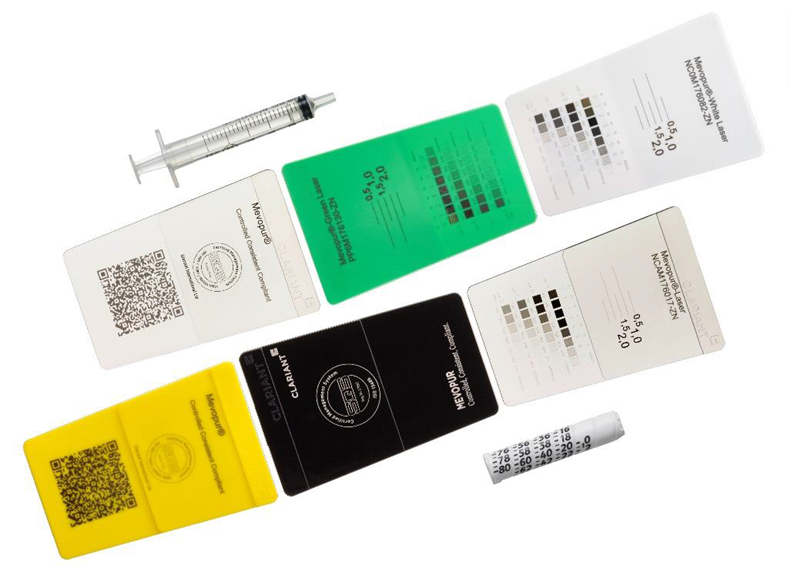
Clariant uses formulation skills to activate the polymer for laser marking and welding.
Clariant supports a Quality by Design approach to laser welding of medical devices
12 Feb 2020
-
MEVOPUR® laser-welding solutions at MD&M West
-
Laser-transparent and laser-absorbing materials available
-
Systems approach and formulation know-how ensure optimum results
-
Compound or concentrates available to optimize processing
Muttenz, February 12, 2020 – Clariant Healthcare Polymer Solutions announces availability of new medical-grade polymer compounds and concentrates for laser-welding supported by formulation expertise that can help medical-device manufacturers take a ‘Quality by Design’ (QbD) approach to laser-welding of plastic components.
The compounds and concentrates, are marketed under the MEVOPUR brand name covering Clariant’s ‘medical grade’ materials and are among several innovations being presented at MD&M West 2020 in Anaheim, CA, February 11 -13. Clariant Healthcare Polymer Solutions is exhibiting in booth 2351.
Laser-welding offers numerous advantages in medical and diagnostic applications in terms of speed and reliability, according to Steve Duckworth, Global Head of Marketing & Business Development. Yet, if the combination of polymer, colorants, part design and processing techniques are not considered in the earliest stages of product development, weld consistency can suffer, and the risk of product failure may become unacceptable.
Compared to other methods of assembly, laser welding can develop a high-strength bond, without many of the disadvantages of other methods. For example, surfaces do not require pre-treatment and the risk of creating potential leachables from solvent residues or adhesive is eliminated. In addition, high-speed joining of even complex geometries is possible with minimal stress in the joints. Welded components can survive repeated sterilization, if necessary.
EARLY COLOR SELECTION
However, color choices play a critical role in the ability of one part to transmit laser energy, and the other to absorb laser energy and melt at the bond line. In many applications, color decisions are taken only in the later stages of the development cycle by the marketing team or others not involved in the functional design process. When laser welding is involved, this introduces considerable and unnecessary risk and complexity.
‘Traditional approaches to coloration may not work,” explains Duckworth “For example having a visually opaque black or very dark color that typically uses carbon black would not perform in the laser-transmitting component. Neither would a white component, where a typical pigment used is titanium dioxide.”
That’s why Clariant takes a ‘Quality by Design’ approach with its customers. Duckworth continues: “Our team of experts has a thorough knowledge of pigment and additive options for absorbing and transmitting parts, so we can give different color options in a wide range of polymers including polypropylene, ABS, polycarbonate, PC/ABS blends and more. In collaboration with laser equipment suppliers, we’ve developed analytical techniques that can be used to screen different solutions to find the best one.”
PROCESSING INFLUENCE
Once an optimal color has been selected, the distribution of pigments and additives in the plastic component and part-to-part consistency become important. Although masterbatch concentrates added to the host polymer during processing may be convenient for introducing color, the processing equipment, (e.g., injection-molding machines), and the flow-path in the tool, may only allow for poor or inconsistent distribution of the pigments at the targeted weld-line. Using a fully compounded ready to use material may help solve this distribution problem.
This is why the MEVOPUR laser-welding solutions are available in both a concentrated masterbatch form, and as a ready-to-use compound.
COMPLIANCE BUILT IN
Both are offered as part of the MEVOPUR family of medical grade products and services. This means they have been manufactured in one of three global Clariant facilities certified to EN: ISO13485-2016 quality standards. Comprehensive regulatory testing and documentation includes pre-testing of raw-material ingredients to pharmaceutical and medical-device industry standards, DMF, formulation disclosure, etc. Change-control measures further minimize risk.
“In the medical device segment, it is not enough to create an attractive-looking product,” Steve Duckworth concludes. “Your product must meet all the rapidly changing regulatory requirements, while performing reliably over time. Applying Quality by Design (QbD) principles, we believe that every decision you make on plastic materials in the early development stages represents an opportunity to meet these challenges and avoid problems later in the validation or life-cycle.”